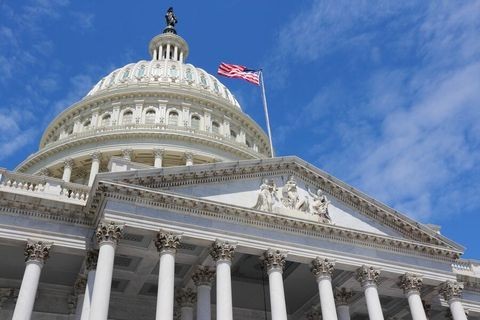U.S. Announces Agreement with China, $3 Billion Pledge to Help Mobilize Climate Finance
Client Alert | 4 min read | 11.14.14
Earlier this week, the United States and China announced a landmark bilateral agreement to increase cooperation on climate change matters. The centerpiece of the agreement is each country's preliminary post-2020 greenhouse gas (GHG) emissions reduction goal, which may help galvanize action and frame 2015 multilateral climate negotiations in Paris.
The announcement of the U.S.-China agreement is monumental; it also complements another major climate change development in November. Later this weekend, as part of the G20 meetings, President Obama will announce a sizable $3 billion contribution over four years to the now-operational Green Climate Fund (GCF), the multilateral climate fund being designed to advance a targeted mission to use a range of debt and equity instruments and grants to finance and support clean energy, low carbon, and climate resiliency projects. The initial contributions of developed nations are intended to attract and mobilize additional private investment to further catalyze a transition to a low-carbon economy – which provides a useful compliment to other sources of financing for energy, efficiency, and sustainable development projects that help reduce GHG emissions in the developing world.
U.S.-China Agreement on Climate Change
Under the announced agreement, the U.S. will seek an economy-wide reduction in GHG emissions of 26-28 percent below 2005 levels by 2025, going beyond its current 2020 target of 17 percent below 2005 levels by 2020. In its first public announcement of this kind, China committed to ensuring that its GHG emissions peak by 2030 through implementation of initiatives focused on air pollution, clean energy expansion, and broad economic reforms. These initiatives include the goal of increasing the share of renewable generation in China's energy mix to 20 percent by 2030, which will require the addition of 800 to 1,000 gigawatts of new capacity from renewable resources. For perspective, that is roughly the capacity of the entire U.S. electric grid.
The U.S. and China also agreed to increase cooperation to develop advanced coal technologies and major carbon capture and sequestration (CCS) demonstration projects, renew funding for clean energy research and development, launch a low-carbon cities initiative, promote trade in environmental goods, and expand pilot programs for smart grid deployment.
U.S. Announces Sizable Climate Finance "Pledge" to Green Climate Fund
The U.S.-China agreement will not be the only major action of the U.S. on climate this month, however. This weekend, the U.S. is expected to announce a financial "pledge" of $3 billion to the GCF during this weekend's G20 meetings in Brisbane, Australia, and ahead of the GCF's November 20 Pledging Conference in Berlin, Germany. Unlike most climate funds, where private sector participation is often too costly or otherwise unattractive, the GCF will include a dedicated private sector facility (PSF) that can directly support and attract additional investment at scale.
The GCF was established in December 2011 by the Parties to the United Nations Framework Convention on Climate Change (UNFCCC), yet exists and operates independently as a unique multilateral trust. Headquartered in Songdo, South Korea, the GCF intends to become operational and begin deploying funds in 2015. The capitalization of the GCF was initiated by Germany's pledge of up to $1 billion. Total pledges neared $3 billion prior to the U.S. commitment. The GCF has set an initial funding target of at least $10 billion before the next Conference of the Parties to the UNFCC meetings in Lima, which begins on December 1.
Potential GCF Financial Instruments
In early 2015, the GCF intends to begin deploying capital, working through a large network of financial partners and project companies. The PSF has the potential to become a sizeable financing window for private sector actors interested in emission-reducing projects and investments. A desired objective is for funds be deployed to address market failures and risk-based impediments to the flow of private investment. Eligible financial instruments initially include debt products (e.g., loans, guarantees, credit facilities, etc.) and equity, as well as several other innovative instruments that can alter the risk-reward profile of certain low carbon investments that can produce measurable environmental benefits.
GCF Investment Framework Developing
In October, through a series of GCF Board approvals, some (but not all) of the initial structural issues were approved. The GCF Board is considering whether to work with accredited financial intermediaries and implementing entities to deploy funds, which may include private sector financial institutions in addition to traditional non-governmental entities. The accreditation process has not been finalized, and will be taken up during the next GCF Board meeting.
Potential Project Agreements and Participation
Based on preliminary GCF Secretariat recommendations, and upon the Board's approval of a specific project or program activity (e.g., clean energy or energy efficiency projects), the GCF will enter into a project agreement with an accredited entity (acting for itself or as a pass-through for a third entity that executes the project financing), setting out the specific terms and conditions of services to be rendered by the entity for the GCF with respect to the approved activity, including the payment/fee schedule and measurable results. If the accredited entity model is used, additional project agreements would be needed between the GCF, the executing entity, and the special purpose vehicles implementing the projects. To illustrate the Fund's potential flexibility, the GCF Secretariat has suggested the following diagram of possible funding relationships:

All relevant documents and details on upcoming meetings of the GCF are available for review on its website.
Insights
Client Alert | 3 min read | 09.15.25
On August 19, 2025, the U.S. Senate Committee on Finance (“Senate Finance Committee”) sent Paul Atkins, Chairman, U.S. Securities and Exchange Commission (“SEC”) a letter calling on the SEC to investigate White River Energy Corp (“White River”). In the letter, the Senate Finance Committee confirmed a criminal investigation into White River related to the sale of so-called “tribal tax credits” that according to both Congress and the IRS, do not exist. The letter further states that White River allegedly earned millions of dollars selling these credits and has not been forthcoming with investors regarding the existence of the criminal investigation. According to the Senate Finance Committee, White River has failed to file financial disclosure documents with the SEC since March 15, 2024, missing six consecutive reporting periods. The letter instructs White River to disclose the existence of the DOJ criminal tax investigation, and calls on the SEC to take action if White River fails to do so.
Client Alert | 4 min read | 09.12.25
SBA’s OHA Further Defines Extraordinary Action in SDVOSB Appeal
Client Alert | 6 min read | 09.11.25
U.S. Department of Commerce Partially Relaxes Export Controls on Syria
Client Alert | 9 min read | 09.11.25



